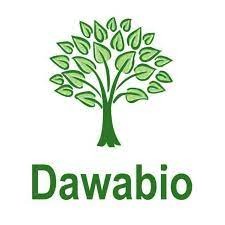
Varicocele is characterized by the dilation of a vein (varicose vein) in the spermatic cord, a fibrous cord located in the bursae above each testicle, and connecting them each to the scrotum. Dawasanté experts provide you with a natural treatment to permanently cure Varicocele and pain without surgery.

If you want to know more about our product to cure varicocele and place an order, click here!
To contact our experts please call or write to us on the following number, tel / WhatsApp
: 0022990431727
WE DELIVER ALL OVER THE WORLD
VARICOCELE: GENERALITIES, CAUSES, SYMPTOMS AND NATURAL SOLUTION
What is a varicocele?
The scrotum is a skin-covered sac that holds your testicles together. It also contains the arteries and veins that carry blood to the reproductive glands. A venous abnormality in the scrotum can lead to varicocele. A varicocele is an enlargement of the veins in the scrotum. These veins are called the pampiniform plexus.
A varicocele only occurs in the scrotum and is very similar to varicose veins that can occur in the leg. A varicocele can cause a decrease in sperm production and quality, which in some cases can lead to infertility. It can also shrink the testicles.
Varicoceles are common. They are present in 15% of adult men and about 20% of adolescents. They are more common in men between the ages of 15 and 25. Even though most varicoceles don't cause pain or produce other symptoms, they are known to interfere with fertility.
Varicoceles usually form during puberty and are more often found on the left side of your scrotum. The anatomy of the right and left sides of your scrotum is not the same. Of course, varicoceles may exist on both sides, but this is extremely rare. Not all varicoceles affect sperm production.
What is the best treatment to cure varicocele?
No, varicocele is not a disease where the only solution is surgery. We have a herbal tea made from herbal remedies that is very effective to cure permanently and without side effects. When we know that the operation often leaves sequelae, this is a great advantage.
This natural remedy cures varicocele successfully by strengthening the valves or valves located in the veins of the spermatic cords. It is the miracle solution to avoid surgery. It has proven its effectiveness with dozens of resolved cases.
What Causes Varicoceles?
The testes are suspended in the scrotum by the spermatic cord. Inside each cord is a tube through which sperm pass (the vas deferens), the testicular artery that pumps blood to the testes, and a network of smaller veins called the pampiniform plexus that drain blood from the testis into the testicular veins. A series of valves in the testicular veins prevent blood from the testicles from flowing back into the testes. Sometimes these valves do not close completely or properly and the blood begins to flow back by gravity. This forms a varicocele or enlargement of the veins. Varicoceles usually starts at puberty. Varicoceles often occur on the left testicle because the anatomy of the left testicular vein, which flows into the body near the kidney, is subjected to the forces of gravity. The appropriate testicle is protected from the effects of gravity by a natural “valve” on this side.
What are the symptoms of varicocele?
Most men with varicocele have no symptoms. But a varicocele can cause scrotal pain or discomfort, especially after long periods of standing or physical activity. The pain may worsen throughout the day and decrease or go away. Some pains are excruciating
Nonetheless, varicoceles are a concern for another reason. Some can cause infertility VARICOCELE AND FERTILITY (reproductive problems) and slow down the growth of the left testicle during puberty. Varicoceles can cause fertility problems in about four in ten men who have difficulty having a first child. They can also be the cause of fertility problems in about eight in ten men who have difficulty fathering a child after their first child.
How do I know if I have a varicocele?
Varicocele can be identified during a routine physical exam when the testes are felt while the male is in an upright position. Smaller varicoceles are often not detected until later tests, which may involve Doppler ultrasound (ultrasound designed to detect the sound of blood flowing back into the valve) and thermography (infrared sensing technology to detect pockets of heat created. by the accumulated blood).
" Varicocele does not develop into cancer but it can be painful at first. You see huge varicoceles (varicose veins on the testicle) and when you feel it, it looks like there is spaghetti inside. These are advanced varicoceles. Like varicose veins, at the onset of the disease it hurts, but not necessarily afterward when they are very large. Varicocele can be tender at first, not always very painful, but it can sometimes affect the body. condition or quality of the offending testis. "
The male intimate pains are not to be taken lightly because of lack of care, they can sometimes have serious consequences.
The male anatomy consists of the penis, two testicles as well as annex glands: the seminal vesicles, the prostate. At the top of the testicle, there is the epididymis. It brings together all the small tubules from the gonads to transport sperm. It continues through the vas deferens and then through the ejaculatory duct, passing through the seminal vesicles and the prostate. The whole of this genitalia as well as the organs of the pelvis are supported by the perineum. Muscles that play a role in continence, by exerting pressure on the different orifices that are the urethra and the anus.
The most frequent pain occurs in the prostate, scrotum, and epididymis. Most often, it is inflammation due to microbial infection. We talk about prostatitis when the inflammation affects the prostate and epididymitis when it affects the epididymis. The latter is often accompanied by fever and urination burns.
On the scrotum side, when a violent pain occurs, it can be a testicular torsion. The pain travels up the vas deferens and radiates to the inguinal canal, the fold of the groin. The purse is often increased in size and red. The varicocele, it corresponds to a dilation of the veins of the spermatic cord that ensure the venous return of the testicle. When the varicocele is large, the pain can be excruciating.
Other intimate pains exist, they concern the perineum as well as neuralgia such as, for example, inflammation of the pudendal nerve, the course of which extends from the sacrum to the penis.
The pelvic-perineal chronic pain affects 15% of the world's male population, regardless of age. To relieve these pains, treatments exist but sometimes they are not enough. At the Saint-Louis hospital in Paris, a team offers osteopathy sessions for these patients.
" Chronic pelvic-perineal pain is caused by compressions of the nerves in the pelvis. These are the nerves that supply the various organs of the pelvis (rectum, bladder, prostate, uterus, and vagina ). And these nerves which are stimulated give pain to the pelvis. sick when the organs are normal ", explains Prof. François Desgrandchamps, head of the urology department at Saint-Louis hospital.
To release compressed nerves, osteopathy is very effective. By gradually releasing muscle and visceral tension in the pelvis region, the nerves gradually regain their mobility and the pain subsides. Patients can thus limit or even stop analgesic treatments.
The cyst of the epididymis is a condition that can occur at any age. The epididymis is located at the level of the testicular wall, this structure is essential for the maturation and transport of sperm. Relatively common, these cysts are sometimes very painful and require intervention.
The objective of the intervention is to perform the excision of the cyst. The first step in the operation is to extract the testis and the cyst from the bursa. It is then necessary to free the testicle from the envelopes which surround it. The membranes are thin, this step requires patience and thoroughness.
Using a heat source, the surgeon then cauterizes the small vessels to prevent any bleeding that could lead to hematoma formation. Cyst and testis are then separated and the cyst is released from its last attachments. It is then sent to anatomo-pathology in order to be analyzed. The last step of the operation consists of stitching up the envelopes that surround the testicle and reintegrating it into the bursa.
The patient can go home a few hours after the procedure. It takes about a week for all the pain to go away.
To contact our experts please call or write to us on the following number, tel / WhatsApp
: 0022990431727
WE DELIVER ALL OVER THE WORLD
 If he isn't large enough then he isn't my spec. I loved him, the chemistry was perfect, smiles good, best physic with so much cash to throw around but down there he had a carrot size which turns me off when ever he comes around. i had to turn to my driver for regular clean up.
If he isn't large enough then he isn't my spec. I loved him, the chemistry was perfect, smiles good, best physic with so much cash to throw around but down there he had a carrot size which turns me off when ever he comes around. i had to turn to my driver for regular clean up.

